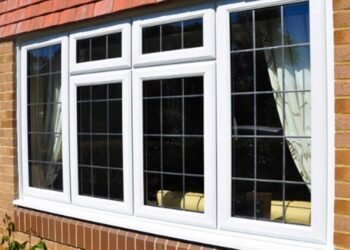We all know how important energy efficiency is for our homes and offices, but did you ever consider what effect the window frames have on your energy bill? Believe it or not, the type of frame you choose for your windows makes a huge difference in how much heat is lost or gained. From single glazing to triple glazing and everything in between, understanding which one is best suited for a homeowner in Portland, Oregon, can keep those monthly bills down while maintaining your comfory all year round. In this post, we’ll explore how window frames impact energy efficiency and what you can do to make the most of your investment.
Important Features of Energy-efficient Window Frames
Different window frames offer various levels of insulation, durability, and security. To get the most out of your windows’ energy efficiency, you need to be aware of these key features:
● Frame Thickness and Strength
Thicker window frames act as better insulators, keeping heat locked in or out of a building, depending on your desired climate control. Single or double-glazing panels can be added to the frames for even better insulation and long-lasting performance all year round. These panels can also absorb more sound, creating a quieter atmosphere indoors and outdoors around the building.
● Air Tightness
When window frames create a tighter seal, this leads to fewer losses of heated air through gaps and holes in the frame material. Installing an airtight window frame can lower your heating bills and increase the overall energy efficiency of your home or business. It will also keep you warm, snug, and protected from the elements during cold weather seasons.
● Low-E Coating and Glazing
With Low-E coating and glazing, you can get your windows to earn their keep; they will ward off unwanted external heat while maintaining the internal warmth within. Advanced Low-E coatings can also protect against infrared radiation, with heat energy reflecting off the glass and back into your home. And this isn’t just a one-way street; during summer months, a combination of special glazings and coating also helps keep interior temperatures cool so you don’t have trouble beating the unbearable summer heat.
● Thermal Bridges
Without proper insulation to prevent thermal bridging, heat will escape the building in winter, and excess warm air can creep in during summer, leaving you with a huge electricity bill. Thermal bridges lead to an increase in energy usage and make it more likely for condensation and mold to form, which spells trouble for your comfort and health. To ensure low energy costs and high levels of comfort, look for window frames that effectively minimize thermal bridging so you may reap the full benefits of an energy-efficient environment.
Tips to Consider when Choosing Energy-Efficient Window Frame for your Home
Not all window frames will boost your windows’ energy efficiency. Here are a few tips to consider;
● Solar Heat Gain Coefficient
This metric indicates the amount of solar heat allowed to pass through your window and building materials. A lower SHGC rating gives you better insulation against the sun’s heat, keeping your home cool and comfortable throughout all seasons. This is an essential consideration when choosing energy-efficient frames, as it will help maintain a pleasant atmosphere and reduce energy bills.
● U-Factor
The U Factor measures a window’s insulation value, so it is easier to determine which type of frame would offer the optimal level of efficiency. Those searching for the best-framed option should look for an option with a low U Factor rating, which indicates that the frame offers a higher insulating value and could help save you money on energy bills.
● Condensation Resistance
This number indicates how much moisture it requires for the glass to condensate in varying temperature settings. Condensation on a surface reduces the thermal insulation of the underlying material or structure, significantly impairing its performance.
A higher number signifies better performance in various weather conditions and less moisture build-up risk. For example, a triple-pane window with a designated condensation resistance of 90 might perform much better than a cheaper single-pane window frame which may have to settle with a rating as low as 10.
● Visible Transmittance
The visible transmittance helps you gain a greater insight into how much light can pass through the glass. The higher the transmittance rate, the more natural light, and heat will come into your home. However, if you are looking for more privacy, remember that privacy glass has a much lower visible transmittance rate, meaning less natural light and heat filters in.
Energy-efficient window frames allow property owners to enjoy these benefits while using less power, making them both an excellent investment and an invaluable contribution towards a sustainable future. With the right information, you can select the perfect frame for your property and enjoy a comfortable interior that takes advantage of all the latest energy-saving technology.












